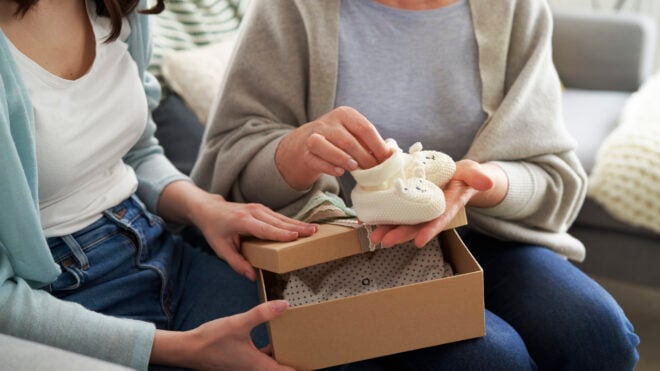Expecting moms often face health or personal circumstances and know that they'll end up having a C-section. With recent studies highlighting the long-term health issues of babies born via Cesarean, these moms-to-be are getting proactive with a practice known as "vaginal seeding."
Yes, you read that right: vaginal seeding. So what exactly is it? Let's start at the beginning. The human body is home to trillions of microorganisms that make up our individual microbiomes. Our microbiomes are amazing multitaskers that do everything from help us deal with infections to train our immune systems. Previously, Western medicine used to think that our microbes were foreign invaders and that things like dust and bacteria were to be avoided at all costs to prevent diseases—hence the hand sanitizer craze. But now, new research has shown that these little guys may be working with us from as early as birth.
RELATED: How Probiotics Can Change Your Child's Life
When a baby is still inside the womb, their gut hasn't yet had the chance to create these helpful microbes. So when a baby is born vaginally, they make their way down the birth canal and are coated by their mom's microbes, making their microbiome in the early days of life very similar to that of their mother's vagina.
But what happens with babies born via C-section who never make it down the birth canal or get enveloped in their mom's water breaking? Instead of resembling the microbiome of their mom's vagina, their microbiome will be closer to the skin of the multiple people they'll be around afterwards—doctors, nurses and maybe even other patients in the hospital. Some researchers now believe that having this altered bacterial population may make these babies more susceptible to illness and a host of other long-term health issues connected to C-sections.
Enter vaginal seeding. About an hour before the surgery, some pregnant women are inserting a piece of gauze in their vagina and removing it right before the procedure to seal in a container. Once the baby is born, someone will rub that piece of gauze inside the baby's mouth, on their body and around their eyes—just like a baby who would've been born vaginally.
While there's not enough conclusive research done on this yet, Dr. Maria Gloria Dominguez-Bello, an associate professor in the Human Microbiome Program at the NYU School of Medicine, tells Body and Soul that while they can't replicate the process 100 percent, given how long some natural labors take, "there might be a window very early on after birth when we can help balance the immune system."




